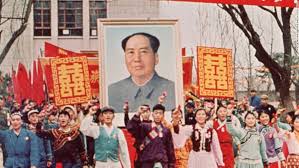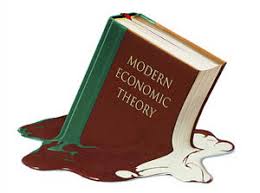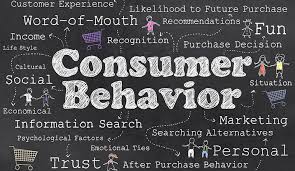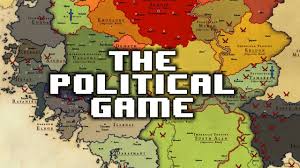Deng Era and Mao Era in China Essay Paper What distinguishes the Deng era from the Mao era in China; what ways did Deng adhere to Mao’s policies and how did he change them.

Deng Era and Mao Era in China Essay Paper Order Instructions: This is a first-year Asian studies essay so it is not a high level one.
This essay must include the introduction and conclusion, and we will choose the question 5 as the topic which is ‘What distinguishes the Deng era from the Mao era in China? In what ways did Deng adhere to Mao’s policies and how did he change them? ‘
You don’t have to be too detailed in this essay but point out some strong points and find some reference to support them.
Thank you and I am looking forward a quality first year level asain study essay cheers
SAMPLE ANSWER
Deng era and Mao era in China Introduction
The histories and cultures of Asia are very important in any Asian study as they provide some basic general knowledge and intellectual skills required to effectively study any one of the cultures. These usually include China, Japan, Korea, India, Thailand and many more. The religions of the people of the East Asia culture usually include Confucianism, Taoism, Shinto, and Zen Buddhism. The South Asian culture is majorly made up of Muslims. The Chinese Culture is one of the oldest in the World. It covers a large eastern Asia region, therefore customs and traditions vary greatly depending on the province, city, or town. Throughout history, many groups have either merged into other ethnicities or disappeared. The largest group, Han Chinese has managed to maintain traditions. Ever since the period of the Three Sovereigns and Five Emperors, one or another Chinese Monarch has been the main ruler. These periods are usually similar in the sense that government and military officials are placed high in the hierarchy, while the rest are basically under the regular Chinese law. Ever since 256 BCE, the Chinese society was organized in various socio-economic classes (Chai 2003: 165). These are commonly referred to as four occupations (Zhang 2013: 450). Unfortunately, this hierarchical system was not effective as other social groups were left out. The distinctions between the groups also became confusing as the Chinese culture was commercialized during the Song Dynasty (960-1279 CE) (Chang 2014: 42). This paper will particularly focus on the Chinese Culture during the Deng and Mao eras. It will distinguish the differences between these two leaders as well as their similarities.
Distinguishing the Deng Era from the Mao Era
The Chinese regional policy has undergone decades of trials, adjustments and readjustments as is noted from Maoist redistributive policies to Deng’s approach of the uneven development. Therefore, the policies implemented during the Mao era and Deng era is what can be used to distinguish the two periods. Other forms of development can also be used to achieve the same purpose; such as agricultural situations, political reforms and many more (Chang 2014: 49). The land reforms under Mao that took place between 1953 and 1978 were too many, a fact that proved there were failures in land policies during this time (Chai 2003: 167). Mao was basically experimenting different policies trying to figure out which one will prove effective. This was frequently not supported by the peasantry. For instance, the land reforms supported by Mao led to many landowners losing their lands to the states. This happened because farmers were advised to form cooperation’s, thus they were offered usage rights, but not ownerships of the land (Chang 2014: 43). This in turn greatly affected the agriculture economy at this time, as the absence of incentives resulted in poor productivity for workers.
The compensation offered for these workers in the collective farms was calculated through complex shared points systems. The fact that farmers knew the land belonged to the state also affected their productivity as it made them feel used (Goldman 2009: 664). The food they produced in the farms was sold to the state at fixed low prices compared to the price offered for the open market where other members of the public went to purchase them. Hence, these workers were forced to rely on government subsidies for survival. The infrastructure during the Mao era was poor, and the resulting transportation problems caused great loss as farmers could not move food to their homes without them spoiling. Gradually, the amount of food produced in the fields reduced as a result of poor land management. The chairmen of the collective cooperation’s pushed workers to work on the fields despite the soils being exhausted and water supply reducing drastically (Goldman 2009: 665). It was as a result of this low productivity that China experienced food shortages and famines. To improve the situation, Mao decided to facilitate programs for fertilizers and hybrid seeds. Unfortunately, they also had negative environmental effects.
The Deng era turned out to be a complete opposite of what was happening during the Mao era. In 1979, Deng started working on dismantling the controlled collectivism system (Goldman 2009: 670). He did so by encouraging the farmers to once again start working on their individual plots. Legislation was passed that farmers could employ laborers, and even sell surplus (Walder & Litao 2006: 357). Incentives were offered for peasants who were still not allowed to own land. Deng achieved this by offering them long-term and renewable leases, therefore they could use the land as their own for the given duration. Therefore, once again, order was achieved in China, where the state only expected to be offered part of the crops produced. As a result of this positive change to the reforms, agricultural productivity was once again improved. Farmers made great profits from the sale of rice, vegetables, sugar and many other products. Farmers became motivated to join hands, voluntarily, with other farmers. Thus, they were able to improve irrigation and the status of the roads.
Political reforms that took place during the Mao era proved to be more effective than any other issue this leader ever handled. In Mao’s view, he really hoped to develop a new China that was free from corruption, economically equal and respected all over the world (Dirlik 2012: 23). This is why, instead of focusing on individuals, he implemented a collective system. Therefore, during his era, corruption and disparity were reduced at high rates, but the economic and political vision did not turn out as expected. The Cultural Revolution that took place as a result of the Mao era led to a decade of violence and human suffrage. Mao launched this revolution in an attempt to reassert his authority over the Chinese government (Chai 2003: 170). He did this when he started doubting the loyalty of the other members, thus he called upon the youth to clear the country of impure elements. Deng was lucky as he got an opportunity to witness the mistakes of Mao, and thus make the necessary changes to improve the situation. Thus, another distinction between these two eras is that the Mao reign was full of economic and political failures.
Deng developed a reform, which gave the Chinese people mandate over their own property (Walder & Litao 2006: 362). He also stressed on economic development as well as social stability. Therefore, his reign facilitated a switch from planned economy to the market oriented economy. This approach is what greatly enhanced the economy of China. During this era, 170 million people were saved from poverty, the Chinese citizens’ savings bank increased from 21 billion Yuan to 4,628 billion yuan. This era, however was not all good. As Deng was focusing on righting the wrongs of Mao, he forgot to pay attention to other important factors such as corruption. This era led to the development of the entrepreneurial class. Thus, buildings were erected, and the town developed drastically. This was facilitated on the land that was supposed to be cultivated. Thus, there was degradation of a very precious land that would have been used for better purposes. This may be a contribution to the high levels of unemployment experienced in China. Mao’s era provided jobs and social welfare for most Chinese citizens, while the Deng era seems to have forgotten about them. Hence, during the reign of Mao, individuals were poorer, but at least they had jobs and did not feel so insecure economically. The Deng era presents a lot of fear as the people are afraid for their economic wellbeing. This is because state leaders are misusing public money for their own benefits.
How Deng Adhered To Mao’s Policies and How He Changed Them
Deng managed to adhere to some of the policies passed by Mao, but he also took great effort to make changes to many others. These two leaders had a similar vision for the country; however, the approaches they took were somewhat different. One of the policies Deng adhered to was the one intended to improve agricultural and industrial production. As he was part of the government at the era of Mao, he got to learn a lot of things about the approach taken by this leader. This pushed him to make some changes to this policy, which he did by breaking the collective groups and encouraging farmers to work on their own individual lands (‘Sowing the Seeds of Democracy in China’ 1994: 174). In the situation where Mao was taking lands from individuals, Deng changed things by offering lands to individuals who lost what they owned during Mao’s era. Another way that Deng adhered to Mao’s policies can be seen by how the Peasants were still not given ownership, but instead they were offered rights to cultivate and benefit from the products through leases. The offering of renewable leases is how Deng changed this policy so that he could further enhance incentives for the workers. Thus, even though they were unable to get ownership to the land, they were given an opportunity to farm on it as if it was their own. This is because they only had to give a little percentage of their products to the state.
The policy of Mao that offered employment to all in the lands as workers, and offered them economic security is also another one that Deng changed. This caused worry to many individuals as they now had to suffer from high rates of unemployment, as well as the increasing risk of economic insecurity. By changing the collective policy, individuals had to find employment on their own and live off their hard work.
The military policies of Mao are also another example that Deng adhered to, though after making some changes. He first started by encouraging the criticism of the Cultural Revolution that was triggered by Mao. The public soon resented the revolution, and this led to its end. It was later replaced by the “Beijing Spring” that enabled people to peacefully communicate their grievances over the period (Xu 2014: 184). This made the other politicians with positions in the revolution to be weakened, while also strengthening the positions of others who were suffering at the time.
Deng continued with Mao’s vision of making China a unique and universally respected country. He understood that for the country to achieve the expected development, it would also mean developing the whole world. Thus, he made an effort to make amendments with other countries. As a result of this, he traveled to the West where he held meetings with various leaders. The country’s relationship with Japan was also improved. It was as a result of these efforts that Deng managed to obtain Hong Kong back from Britain, and colony Macau from Portugal (Xu 2014: 188). Deng did not try to improve the country’s relationship with the Soviet Union (Dirlik 2012: 27). This is also another way that he adhered to Mao’s policy.
Deng Era and Mao Era in China Essay Paper Conclusion
The Mao era is very different from the Deng era in that the previous was greatly characterized by many problems. This however does not mean that it was all bad, as the reign of Mao also improved some conditions of the country. Deng managed to take Mao’s setbacks to his advantage as his first steps were to right the wrongs of this leader. Thus, the country managed to develop and improve economically and politically over a very short time. Just like any other leadership, Deng’s era was also challenged by various issues such as rise in unemployment rates, increased corruption that could not be controlled, and also misuse of fertile land. These, however, were not as great as the situation during the Mao era where workers felt misused, there was a decline in production, starvation, poor infrastructure, and also war where millions lost their lives.
Deng Era and Mao Era in China Essay Paper Bibliography
Chai, W 2003, ‘The Ideological Paradigm Shifts of China’s World Views: From Marxism-Leninism-Maoism to the Pragmatism-Multilateralism of the Deng-Jiang-Hu Era’, Asian Affairs: An American Review, vol. 30, no. 3, pp. 163-175. <http://eds.a.ebscohost.com/ehost/detail/detail?sid=d3238608-ea11-40de-9060-74d6e3644f51%40sessionmgr4004&vid=0&hid=4105&bdata=JnNpdGU9ZWhvc3QtbGl2ZQ%3d%3d#db=aph&AN=11865825>
Chang, GG 2014, ‘China’s Third Era’, World Affairs, 177, 3, pp. 41-49, Academic Search Premier, EBSCOhost, viewed 29 October 2014. <http://eds.a.ebscohost.com/ehost/detail/detail?sid=6e8d5f2c-724f-4571-af58-f8eb9adf48a5%40sessionmgr4003&vid=0&hid=4105&bdata=JnNpdGU9ZWhvc3QtbGl2ZQ%3d%3d>
Dirlik, A 2012, ‘Mao Zedong in Contemporary Chinese Official Discourse and History’, China Perspectives, 2012, 2, pp. 17-27, Academic Search Premier, EBSCOhost, viewed 29 October 2014.
Goldman, M 2009, ‘Repression of China’s Public Intellectuals in the Post-Mao Era’, Social Research, 76, 2, pp. 659-686, Business Source Complete, EBSCOhost, viewed 29 October 2014.
‘Sowing the Seeds of Democracy in China: Political Reform in the Deng Xiaoping Era’ 1994, Foreign Affairs, 73, 3, p. 174, Business Source Complete, EBSCOhost, viewed 29 October 2014.
Walder, A, & Litao, Z 2006, ‘Political Office and Household Wealth: Rural China in the Deng Era’, China Quarterly, 186, pp. 357-376, Academic Search Premier, EBSCOhost, viewed 29 October 2014.
Xu, Z 2014, ‘Chinese Agrarian Change in World-Historical Context’, Science & Society, 78, 2, pp. 181-206, Academic Search Premier, EBSCOhost, viewed 29 October 2014.
Zhang, W 2013, ‘Class Categories and Marriage Patterns in Rural China in the Mao Era’, Modern China, 39, 4, pp. 438-471, Academic Search Premier, EBSCOhost, viewed 29 October 2014.
We can write this or a similar paper for you! Simply fill the order form!












